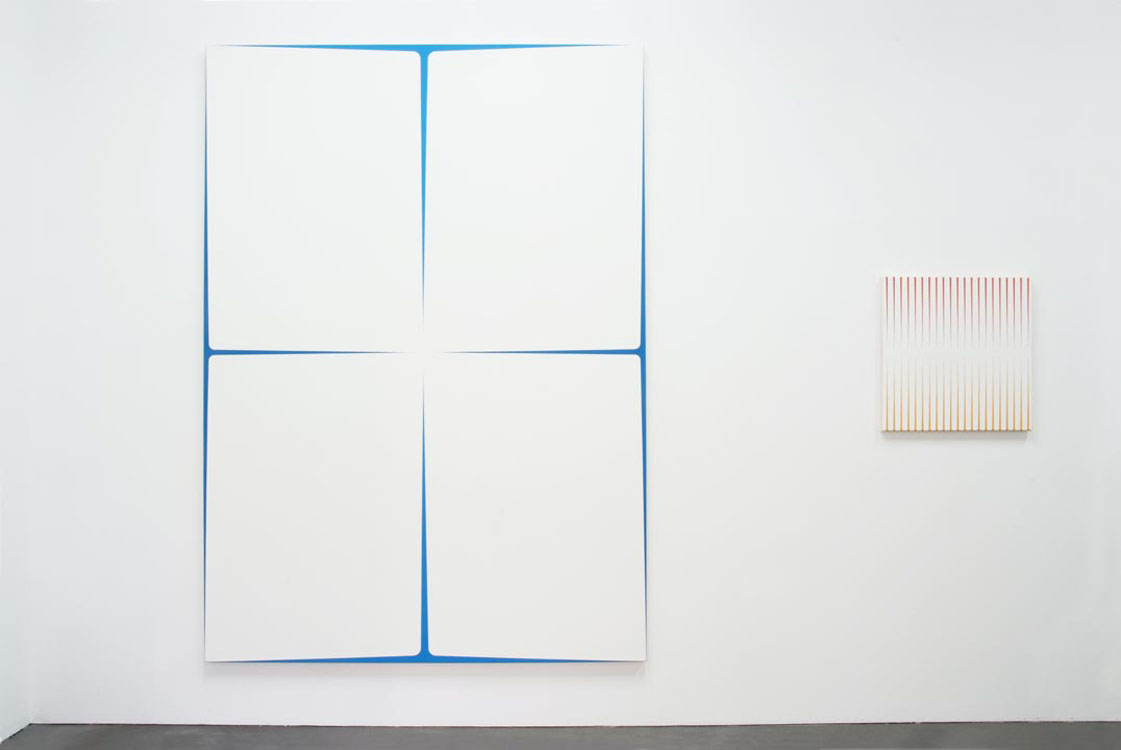
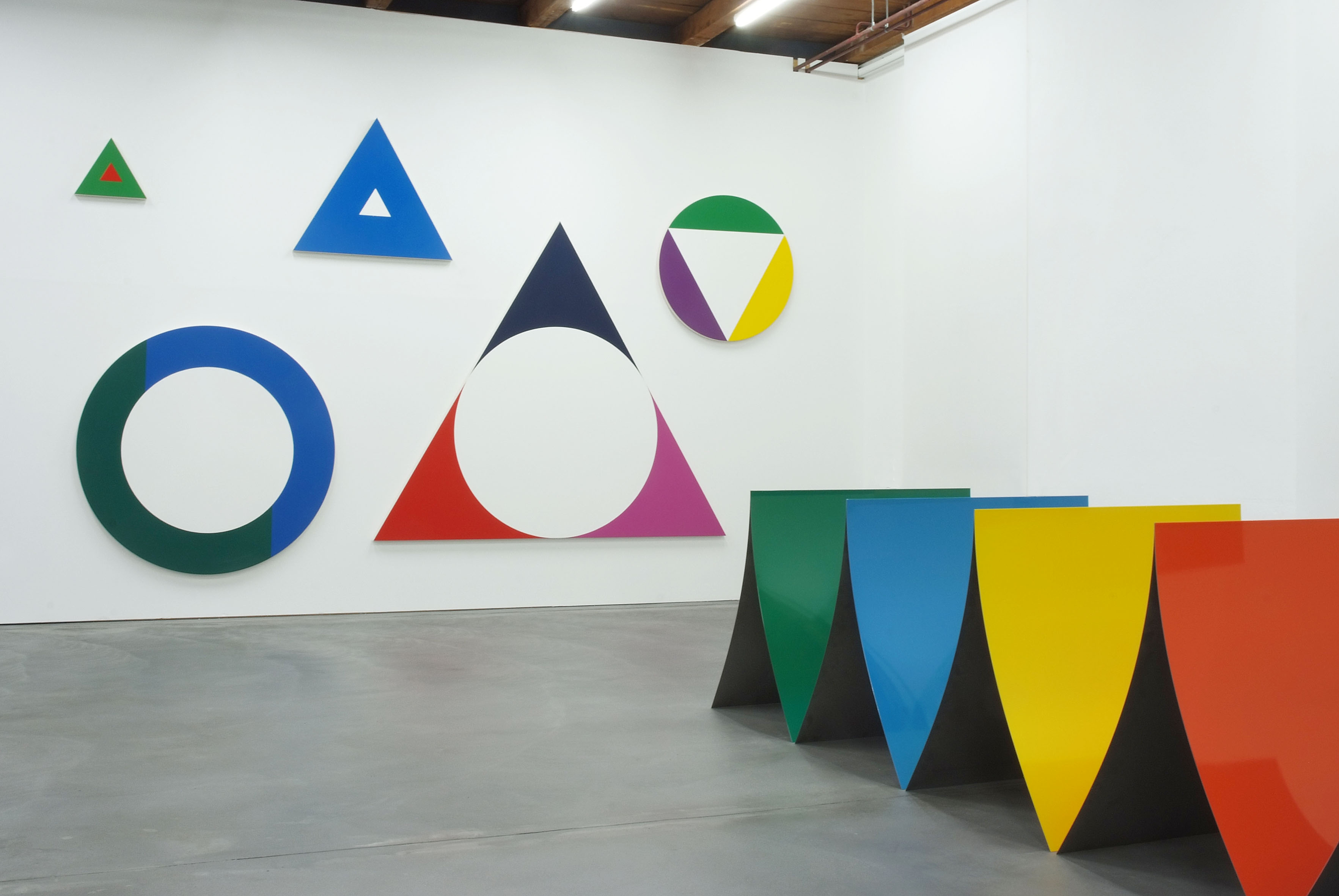
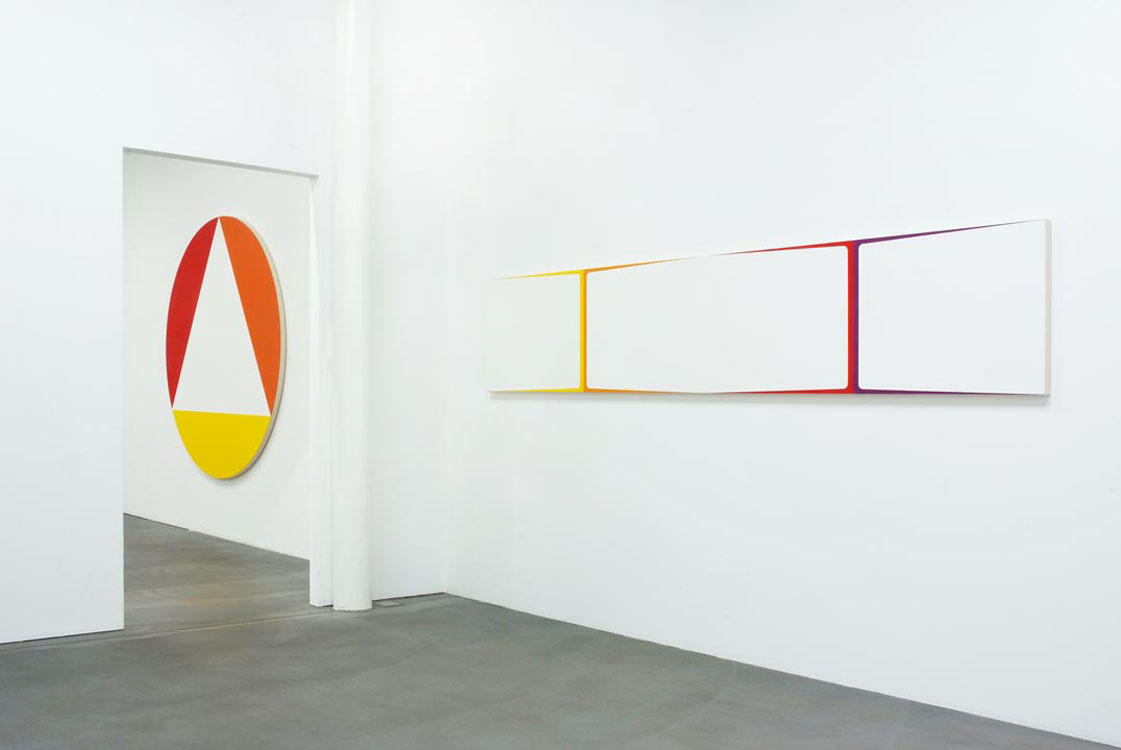
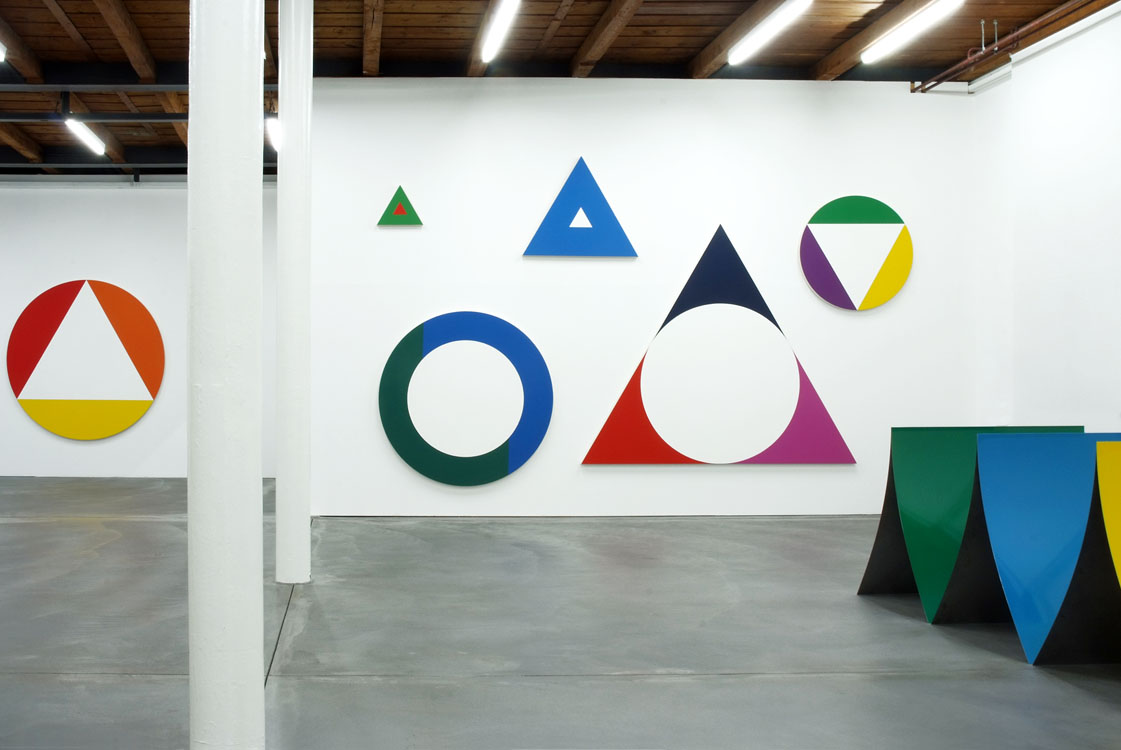
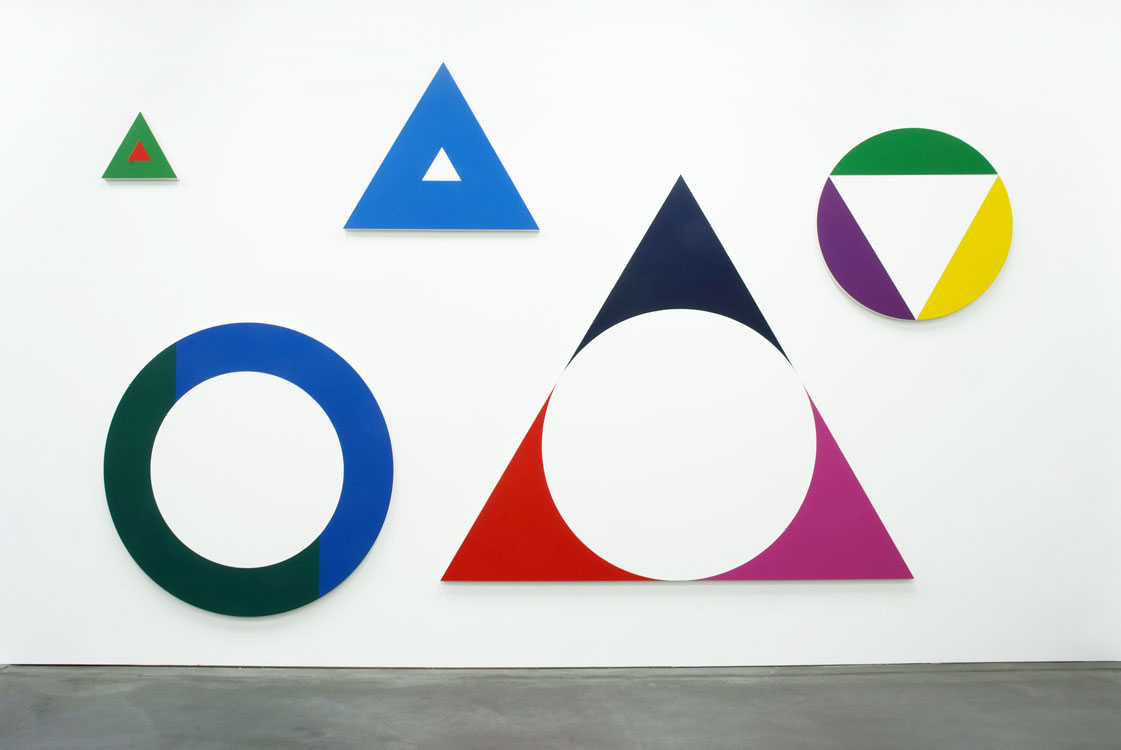
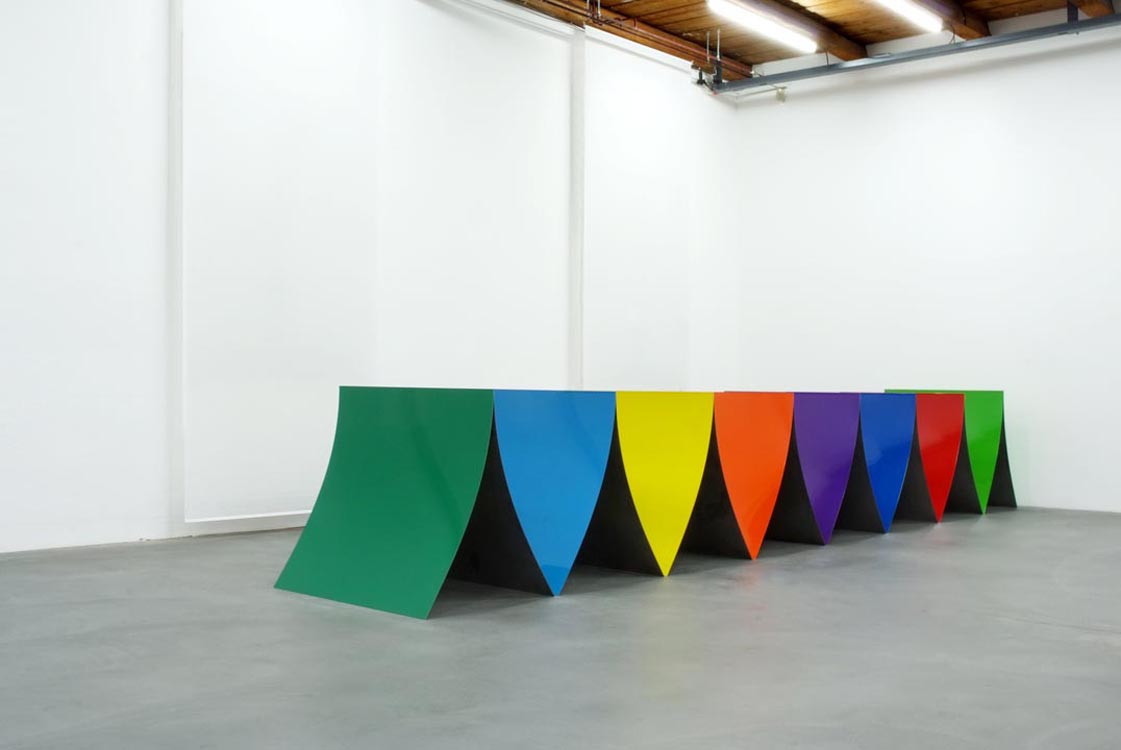
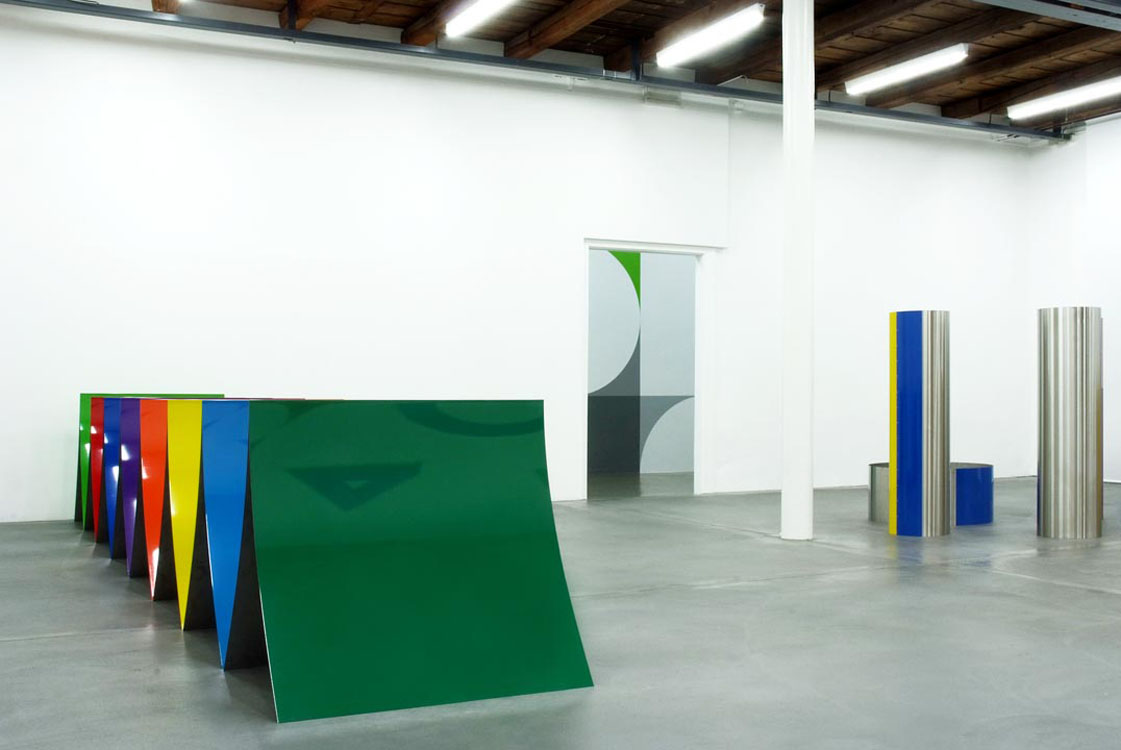
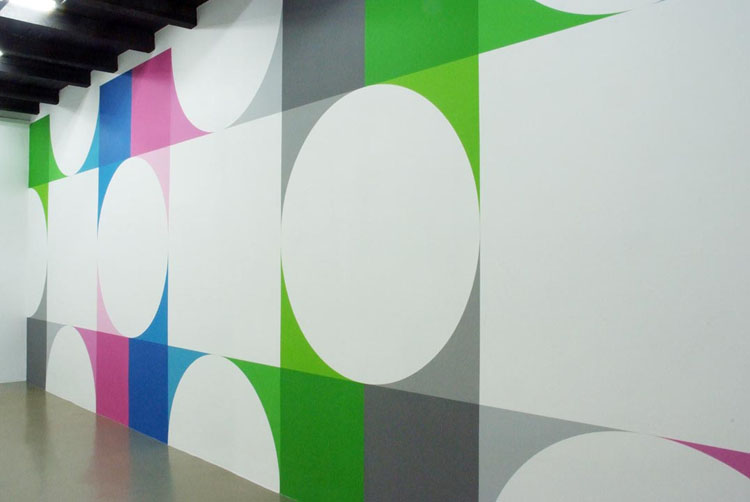
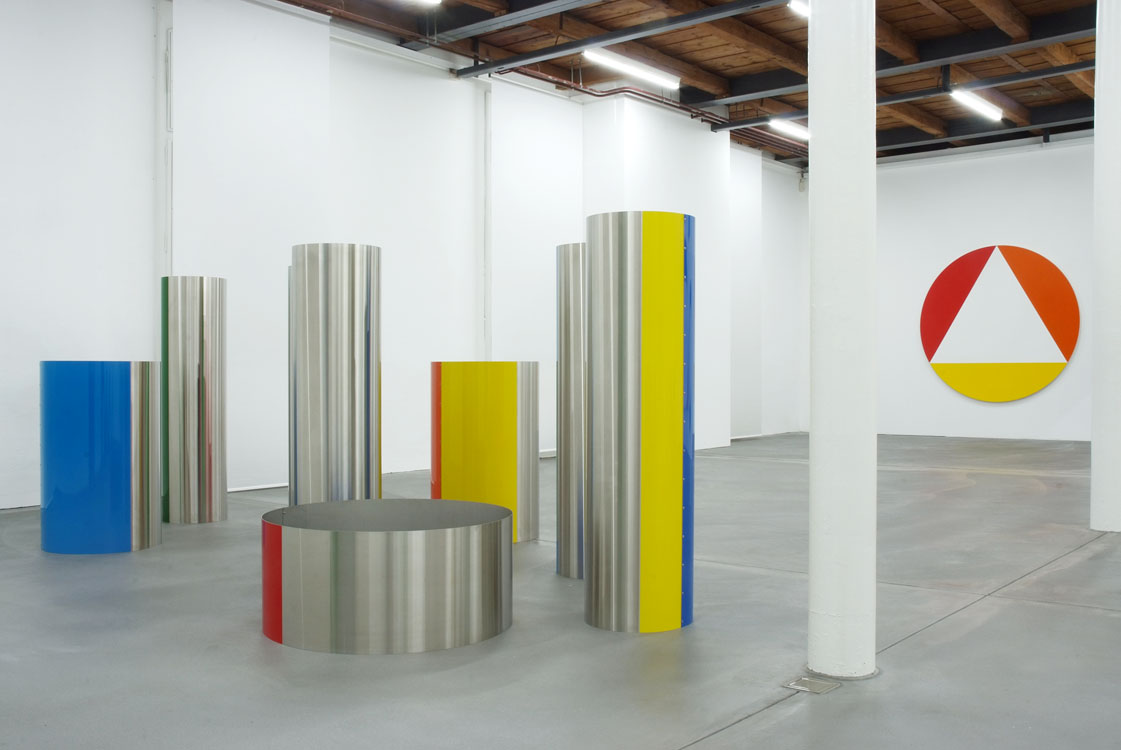
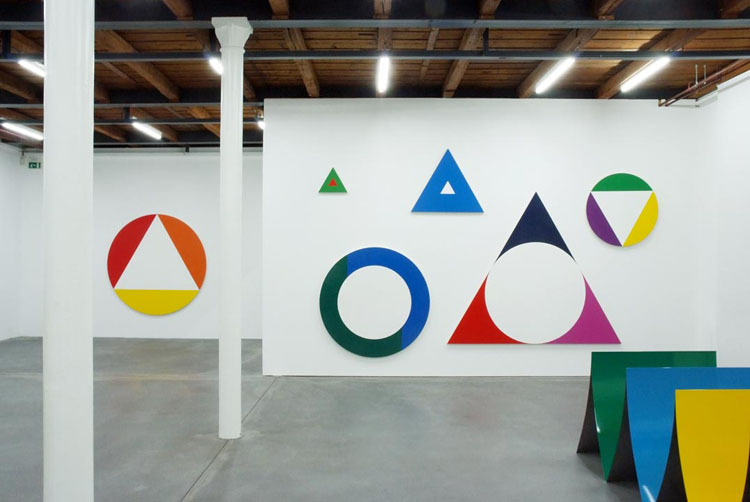
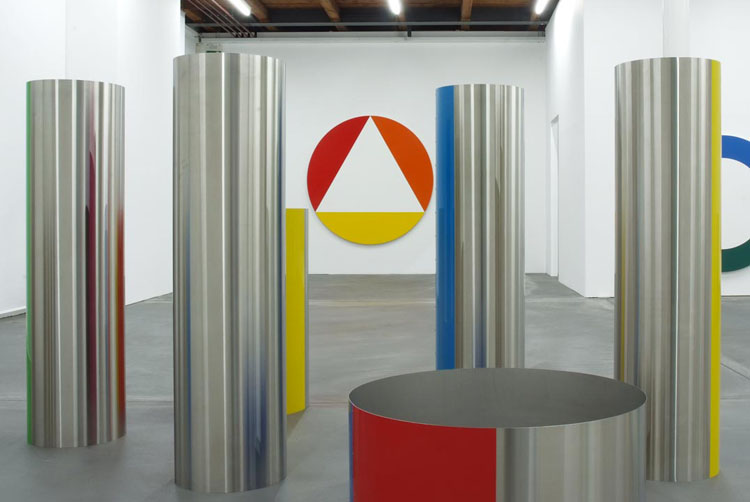
STÉPHANE DAFFLON
KUNSTHALLE FRIART, FRIBOURG, SWITZERLAND
SEPTEMBER 10 — OCTOBER 10, 2011
Stéphane Dafflon’s work is defined above all as painting, but his practice extends to the production of objects, environments and murals that the artist simulates and designs by computer. While painting might ordinarily be characterized by its two-dimensionality and stasis, Stéphane Dafflon’s work is far from being circumscribed by such a definition. The painted forms optically induce depth, the volume pieces break up as they orchestrate circulation, and the succession of viewpoints is organized in the exhibition space, where rhythm and acceleration can be read. In this way, the works inscribe a particular score in the space they occupy, a score whose perception goes far beyond the purely visual.
Stéphane Dafflon could be seen as a relaxed poly-legue of art and his time, so numerous and varied are the heritages that intersect and overlap in his work. That of abstract painting probably figures prominently, but in the distance of the end of the century, when the ideals of modernism have been largely eclipsed in favor of a proliferation of the repertoire of abstract forms in everyday consumer objects. This context reinforces Stéphane Dafflon’s deliberately anti-heroic stance: the tools at his disposal (computers, industrial materials...) are commonplace. The systematic titles of his works are reminiscent of inventory references.
In his long essay on the artist, Jeff Rian develops the various heritages and influences, more or less accidental and more or less conscious, that populate and inform Stéphane Dafflon’s work. The choice of colors and shapes in his work operates like a synthesis, the result of a metabolization of the visual environments of a world that has been drawn and conveyed on computer for a long time now. Visual efficiency and precision of form are the hallmarks of this familiarity with the world, but it would be difficult to pinpoint the precise filiations that operate in these motifs and colors, so much so do they appear as generic motifs.
In this respect, it’s worth noting that Stéphane Dafflon’s work resonates differently in 2011 from his first presentations in the late 90s. The context has evolved, and the fascination with smooth, uncluttered forms - omnipresent in the imagery of the time - seems to have given way to other trends, making it easier to read this type of work without the blurring of fleeting obsessions of the moment. Stéphane Dafflon’s work is more clearly characterized by its musicality and distinctive use of space. His visual universe seems to originate from, as well as extend into, other registers, notably musical, but also choreographic and gestural, so intimately does the relationship between the works and the possible movements they generate or suggest seem to be based.

|

|

|

|

|

|

|

|

|

|

|
|
© All Rights Reserved